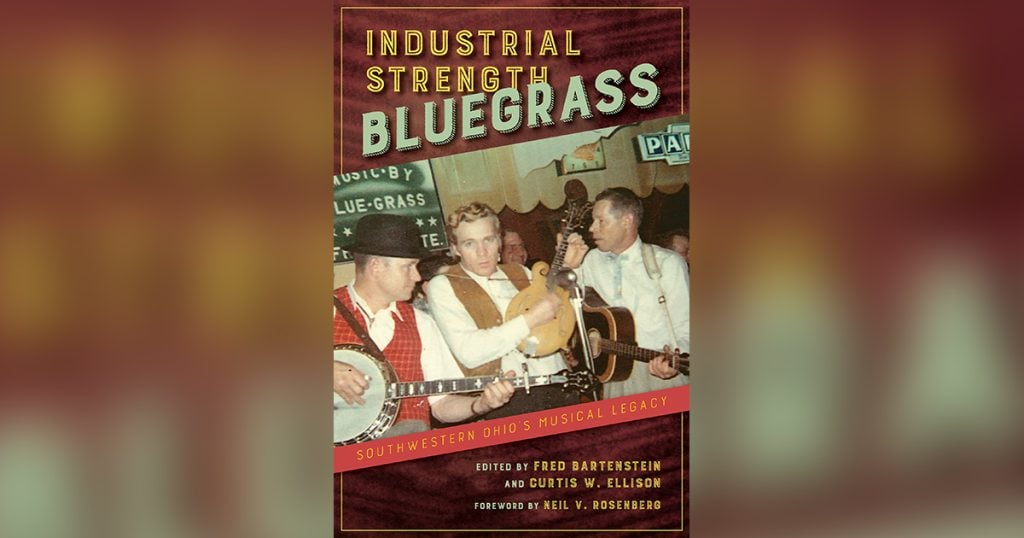Industrial Strength Bluegrass—Southwestern Ohio’s Musical Legacy
Edited by Fred Bartenstein and Curtis W. Ellison
Reviewed By Robert C. Buckingham
University of Illinois Press
The spread of bluegrass reflects the movement of populations from the poverty and adversity of the mountains to places with more opportunity. Southwestern Ohio, with its industrial economy, was one of these places. In a response to employment opportunities during the Great Depression and after WWII, first individual workers then whole families moved into the area. They never cut their ties to the mountains, however, and they brought their values and music with them. Soon, live bluegrass was a staple in the local barrooms and at family gatherings. As can be imagined, the barrooms provided a rowdy environment for the music for working people who played as hard as they worked. From this foundation an infrastructure flourished to support and spread the music. In the end, these immigrants from the mountains influenced the greater world of music, shaping the sound and future of bluegrass. There is a timeline that lays down markers for an overview of the evolution of the scene from 1900 through to 1989.
Neil V. Rosenberg lays out the groundwork for the accounts that follow in his detailed foreward. The story is told in 11 essays, interviews and remembrances that shed new light to the lives of soon to be legends, and answer questions that remained for many about small record labels bands and the people behind them. These bands, recorded often in make-do circumstances, produced some of the most soulful music in the bluegrass catalog. Label names like King, Vetco, Pine Tree, Jalyn, Melody and King Bluegrass now take on new significance. Stories about legends like Sonny and Bobby Osborne, Red Allen, Jack Cooke and Frank Wakefield reveal their humanity and something of the efforts they expended to achieve some notoriety. Moon Mullins and many other disc jockeys helped spread the music and shape the sound are here as well. Back then you could hear bluegrass interspersed with country on AM radio. It was all one, and that’s how most folks thought of it.
We get memories from Bobby Osborne, Red Allen and Lily Isaacs about the music in those early days. They reveal interesting stories about musical heroes who had yet to achieve that kind of presence. We learn more about lesser known but fully deserving musicians like Noah Crase. It is mind-boggling when you realize the influence that labels like Mercury and King had recording so many of the biggest bluegrass artists of the time including Flatt and Scruggs, the Stanley Brothers, Charlie Moore and Bill Napier and Reno and Smiley. It is a startling rich set of musicians, even if you don’t include the Osborne Brothers with Red Allen and Larry Sparks.
This volume is a deep dive into the music that developed in a region that eventually produced some great bands ranging from The Boys From Indiana, and The Traditional Grass to The Hotmud Family and Dry Branch Fire Squad. With its extensive notes and sources, this book is a rich resource of information and powerful insights into the people and times that left an indelible mark on bluegrass.

